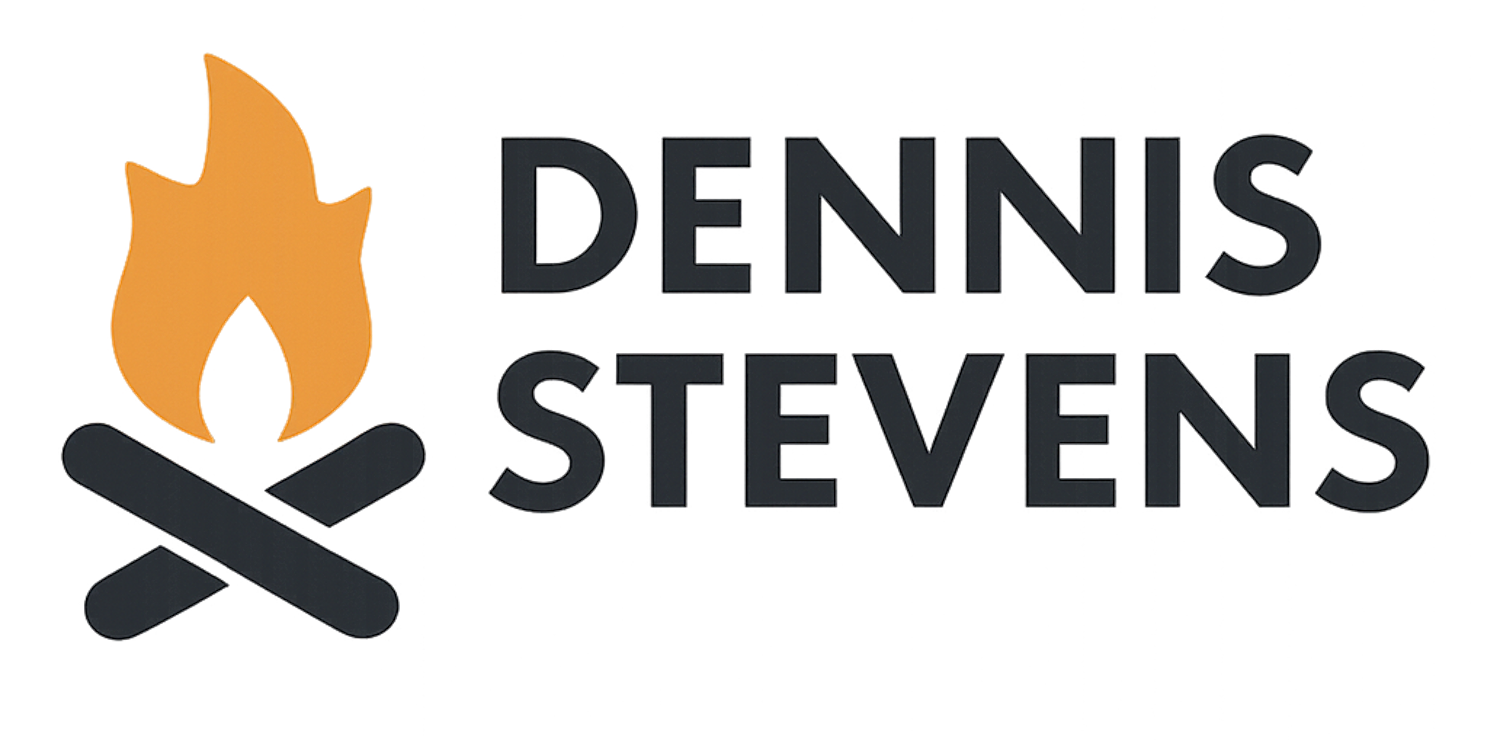The Tyranny of the Bootstrap: Meritocracy’s Hidden Moral Trap
J.D. Vance’s ‘bootstraps’ gospel taps into America’s myth of limitless personal agency, but ignores the structural barriers that trap communities in decline. His clandestine moral argument reveals why genuine freedom requires more than grit; it necessitates justice.

J.D. Vance's "Hillbilly Elegy" tells a compelling story about Appalachian decline that resonates deeply with American audiences. This story traces the unraveling of families and communities through hardship, poor choices, and lost direction. The proposed solution is familiar: pull yourself up by your bootstraps, take personal responsibility, and return to traditional values. This ethos echoes the oft-cited, though apocryphal, Steinbeck observation that socialism never gained traction in America because the poor see themselves not as an exploited class, but as temporarily embarrassed millionaires.
This temporarily embarrassed millionaire mindset captures a powerful current in American life.
Many who face economic hardship don’t see their situation as permanent but as a temporary setback on the road to eventual wealth. Envisioning themselves as future members of the elite, they align their interests with the wealthy and often direct blame outward, scapegoating “the other”, while opposing redistributive policies or safety nets, like universal healthcare, that could clearly benefit them.
The result is a resistance to class solidarity that weakens support for collective solutions to inequality and fuels the very right-wing populist resentment that Michael Sandel describes in The Tyranny of Merit.
When people are told they failed because they didn’t work hard enough, yet see elites thriving with advantages they never had, it breeds anger, resentment, and humiliation. They want revenge: “drain the swamp”, but then, replace it with what? Michael Sandel suggests replacing the meritocratic ethos with a civic ethic grounded in humility, shared responsibility, and respect for the dignity of all work.
Vance’s narrative perpetuates the cycle of "revenge" by re-framing structural decline as an individual moral failing rather than a rigged game, thereby deepening the bitterness and alienation that arise when the promise of upward mobility proves hollow. Americans are now deeply confused.
What's true? Who is to blame?
This diabolically twisted story resonates so strongly because it affirms America's deepest myths about individual agency and self-made success.
Beneath Vance's seemingly straightforward account lies a complex web of hidden moral arguments and assumptions that need to be deeply excavated and explored in American public discourse, so that our assumptions align with a more complicated reality.
Vance doesn’t just tell a personal story; he weaves a narrative that nudges readers toward an intentional conclusion about the “proper” role and size of government. It echoes the radical minimalism of Grover Norquist’s (2001) famous line: “I don’t want to abolish government. I simply want to reduce it to the size where I can drag it into the bathroom and drown it in the bathtub.”
By framing Appalachian decline as the result of bad individual choices and cultural decay, he implies that big government solutions are futile or even counterproductive. The moral argument is that if people would just take responsibility and fix themselves, there’s little need for structural intervention or social obligation.
This persuasive argument has real-world implications that are becoming increasingly apparent. Recent events, such as the catastrophic flooding along the Guadalupe River in Texas, highlight the consequences of this ideology. The aftermath of the disaster saw public officials deflecting blame and resisting calls for accountability, often framing the tragedy as an unavoidable “act of God” rather than a failure of public infrastructure or preparedness.
This response reflects a broader reluctance to invest in public services and infrastructure, rooted in a political culture that prioritizes low taxes and limited government intervention.
The necessary debate that follows is not just about fiscal policy, but about the moral responsibility of government to protect its citizens, as a contest between narratives of individual responsibility and the need for collective, structural action.
The scale of the disaster and evidence of preventable failures underscore the limitations of relying solely on personal responsibility, suggesting that robust, well-funded public systems are essential for community well-being.
Therefore, Vance’s narrative reinforces a worldview in which social problems are solved by shrinking government, cutting public programs, and doubling down on personal grit; this same belief profoundly shapes arguments and conclusions about social spending, taxation, and welfare; the inherent challenges and consequences of this perspective are becoming increasingly apparent in the news cycle.
So, maybe, just maybe, there is more to the story?
The Bottom Line
Self-interest prioritizes individual rights, autonomy, and the belief that people should rise or fall on their own merit. Social obligation, by contrast, emphasizes fairness, mutual responsibility, and the need to structure society so everyone has a real chance to flourish.
This tension isn’t abstract; it shapes our fiercest debates about taxation, welfare, economic justice, and what the legitimate scope of government should be in a society that claims to value both freedom and opportunity for all; the common good.
Beneath it lies an age-old challenge: how to reconcile people’s freedom to choose (agency) with the structural conditions (material power and resources) that shape and limit what choices are realistically possible. These are perpetual arguments that will always exist in America, long after we are all gone, and our job is not to settle the arguments but to mediate them.

The Metaphysical Libertarian Trap
When J.D. Vance attributes the struggles of Appalachian communities to "learned helplessness" and "family dysfunction," he is making a metaphysical libertarian argument that centers on individual responsibility and personal agency.
By framing hardship as the product of poor choices and cultural decay, Vance implies that structural interventions and public programs are largely futile; real change, he argues, must come from within the strength of the community itself.
This perspective minimizes the role of systemic factors and public policy, reinforcing a worldview that elevates self-reliance over collective or governmental solutions. It rests on the assumption that people can simply will themselves out of structural barriers through better choices and stronger character. But that’s an opinion; a cognitive frame, not a fact.
Such framing filters a complex reality through a moral lens of personal responsibility, obscuring the ways in which economic and social structures limit genuine choice. By casting struggle as an individual’s failure or triumph, it overlooks the broader systems that shape who gets ahead and who is left behind.
In effect, it treats personal agency as boundless and unimpeded by external forces; this is the philosophical equivalent of telling someone to swim harder while ignoring the riptide. The frame persists as if it were reality itself. It’s not, it's an opinion and a perspective, wrapped up in a tidy story.
What makes this fascinating is that Vance is not inherently incorrect, but that a deep examination of his moral framework reveals the assumptions and simplistic thinking that we rarely examine or question. It's only revealing a portion of the story, so in that sense, it's a narrative; the data shows only 8% of children raised in the bottom 20% of income distribution reach the top 20% as adults. In Denmark, that figure nearly doubles to 15%.
Vance's hidden argument is that individual effort should be sufficient; this is a moral claim that exposes the deep tensions in how we understand the deeper American story about "freedom."
What Positive Liberty Actually Means
In my work on positive liberty, I've explained that freedom, in its authentic context, requires more than the absence of restraints.
Possessing liberty, in the positive sense, means having the power and resources to overcome the structural limitations that shape one's possibilities, and it acknowledges that classism, racism, and economic exploitation can create barriers to human agency (which means having the power and resources to do things).
In Appalachia and the Deep South (which is where I am from, also), these structural forces have deep historical roots, including economic exploitation, geographic isolation, and systematic underinvestment. Wealth has flowed to outside corporations, while local communities have been left with environmental damage and few lasting benefits.
Vance's moral framework implicitly assumes and implies that structural constraints do not matter; individual will should transcend them. This assumption reveals the hidden tyranny of meritocratic thinking. Winners win because they are the most noble and deserving.
Making sense of hubris: institutional arrogance and meritocracy
Justice Ketanji Brown Jackson’s recent warnings about Supreme Court hubris and Michael Sandel’s critique of institutional arrogance as well as my own arguments about the need for epistemological humility in journalism share a crucial insight: when powerful people or institutions lose sight of their own limitations, they risk eroding democratic legitimacy.
Sandel argues that humility, accountability, and respect for the rule of law serve as guardrails against the abuse of power. Jackson’s dissents echo this, reminding us that trust in democracy depends on leaders recognizing their fallibility and remaining open to public reason and scrutiny.
Meritocratic hubris in American culture
J.D. Vance’s narrative perfectly captures what Sandel calls “meritocratic hubris”; the belief that success is solely the result of individual merit.
This mindset feeds a sense of moral superiority among the so-called “winners,” encouraging them to look down on those who struggle. Sandel warns that this attitude deepens social divides and corrodes the solidarity a healthy democracy needs to function.
The psychological appeal and the hard reality
Meritocracy’s promise is seductive: if you work hard, you’ll get ahead. This story gives people hope and motivation — yet it persists even as the evidence shows economic mobility is collapsing. More than 90% of children born in 1940 earned more than their parents; for those born in the 1980s, that figure dropped to just 50%.
This decline shows that the American Dream of upward mobility, central to the meritocratic ideal, no longer holds true for many.
Bringing it together
Both institutional hubris, as seen in the Supreme Court’s actions, and meritocratic hubris, as Sandel describes and Vance embodies, expose a deeper problem: the failure to see the limits of individual and institutional power. When leaders, institutions, or “winners” lose humility and accountability, they undermine trust, widen inequality, and weaken democracy’s foundations.
The call for humility, whether in our courts or our stories about success, is more than mere moral idealism; it’s a practical necessity for sustaining a fair and open society.
Vance's hidden moral argument suggests that cultural decay caused this decline, but what if the causation runs the other way?
What if structural changes created the conditions that manifest as cultural problems?
These are not a rhetorical arguments in an essay– this is an analytical reflection. And, I’m not advocating for a specific fix; but, I am saying that the complexity of "reality" is its own kind of pain that America, as a Nation, needs to synthesize into a newer and healthier moral imagination.

Structure and Agency in Practice
The relationship between structure and agency shapes every aspect of social mobility. Structural forces set the boundaries within which individuals can exercise meaningful choice.
Consider education funding. When schools in working-class communities receive less resources than elite institutions, individual students face unequal opportunities regardless of their personal motivation or family values.
The same dynamic applies to job markets, healthcare access, and criminal justice. Structural barriers create systematic disadvantages that individual effort alone cannot overcome.
Vance's moral framework doesn't eliminate these realities, but it does render them invisible. His hidden argument is that acknowledging structural constraints undermines personal responsibility; however, this creates a false dichotomy.
Beyond false choices
The debate between individual responsibility and structural constraint isn’t just a false choice — it’s one of the deepest, oldest philosophical disagreements: free will versus determinism. For centuries we’ve argued about how much of life is shaped by our choices and how much by forces beyond our control. The real challenge is deciding where to draw that line in a political context. That’s the work of ordered liberty; holding both views in tension, knowing they will always disagree, yet finding ways to balance individual freedom with the social structures that make real agency possible.
Ideally, in a functioning democracy, the concept of Ordered Liberty offers a nuanced and honest approach. It balances individual freedom with social obligation, recognizing that meaningful agency and a balance of powers require strong, enabling institutions.
This framework reminds us that lasting solutions must address both personal responsibility and structural barriers. American society and our communities need both individual effort and systemic support to truly thrive but right now, we’re trapped in a fight framed as the forces of light versus the forces of darkness; the moral struggle has been oversimplified and, we have complex problems that make real balance even harder to achieve.
The goal isn’t to eliminate individual freedom but to create conditions where agency can actually lead to meaningful outcomes, and extend that freedom to others.
Ordered liberty depends on recognizing the real tension between positive liberty (the power to act) and negative liberty (freedom from interference).
Policy Implications
These divergent and irreconcilable philosophical frameworks lead to radically different policy conclusions. Vance's approach emphasizes community self-help and traditional values while avoiding systemic interventions.
A positive liberty framework would prioritize structural reforms that expand genuine opportunities. This might include progressive taxation, educational investment, healthcare access, and economic development that benefits local communities rather than outside corporations. The choice between these approaches isn't just practical. It's philosophical moral commitment that reflects fundamentally different beliefs about human agency and social responsibility.
When we misdiagnose the problem, we prescribe divergent solutions.
Redefining Success
Perhaps the deepest issue is how we define success itself. Vance's narrative accepts material advancement as the primary measure of achievement, then blames individuals when structural barriers prevent them from achieving that advancement.
My work suggests holding both views of the American Dream, material success to include self-actualization and positive liberty, The reframing with complexity reduces the shame and resentment that fuels political polarization. However, even this expanded vision requires structural support.
Self-actualization necessitates educational opportunities, economic security, and social institutions that foster human flourishing; in this line of reasoning, social obligation needs to be held with equal recognition with self-interest– recognizing the need for balance between irreconcilable polarities; this is the concept of ordered liberty in action.
A healthy democracy isn’t about everyone agreeing, there is no Kumbuya. It’s about managing competing interests, values, and visions of the common good through open, structured conflict; elections, debate, dissent, negotiation. The goal isn’t to erase struggle but to channel it productively.
Without agonism, democracy risks becoming stagnant or authoritarian. But when the agon turns into total war, when disagreement becomes moral absolutism, treating opponents as enemies to destroy, democracy can fracture.
The stakes of this philosophical debate extend far beyond academic theory. How we understand the relationship between structure and agency shapes everything from welfare policy to educational funding to criminal justice reform.
Vance’s metaphysical libertarian stance is seductive because it promises to deliver simple moral clarity: if you fail, it’s your fault; if you succeed, you earned it. But that's just a story.
This is the core of the ‘tyranny of merit’; the belief that one's effort alone determines outcomes, ignoring how structural barriers and social status tilt the playing field.
A more honest view acknowledges that conditions beyond an individual’s control, such as parental influence, family upbringing, early childhood experiences, psychological health, access to capital, and sound advice, continually shape their agency; real solutions must confront these systemic forces that make success possible for some and nearly impossible for others.
A more sophisticated and nuanced understanding of the story acknowledges that structural barriers are real, that individual agency operates within constraints, and that sustainable solutions necessitate both personal responsibility and systemic reform at the social and cultural levels.
The ‘Don’t Tread on Me’ slogan is, to borrow Bentham’s phrase, nonsense on stilts. It clings to an absolutist fantasy of freedom that ignores the real conditions that make freedom possible. Jeremy Bentham mocked abstract natural rights because they pretend to stand above the messy realities of power, resources, and social structure; just like radical individualism pretends we can have liberty without shared rules or enabling institutions.
In truth, meaningful freedom is always social: it depends on mutual obligations, collective restraint, and the scaffolding that keeps the strongest from simply treading on everyone else. The question isn’t simply whether individuals should take responsibility for their lives; it’s also whether America creates the conditions that make that responsibility matter and ensures it’s recognized as a genuine, valuable contribution. True freedom requires both; it's never simple or easy, that's why get the word "agony" from the root agōn.
The Greek word agōn, meaning contest or struggle, is linked to democracy because ancient Greek democracy was built on open debate, competition, and public argument, essentially, these are structured forms of agōn.
This spirit of contestation was seen as vital for making collective decisions and ensuring all voices could be heard. Modern democratic theory still values this idea, recognizing that ongoing debate and disagreement are key to a healthy democracy.




